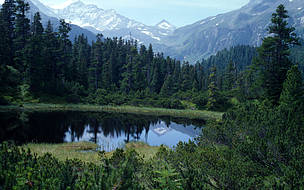Do not use wood just for energy, say WWF and the Mondi Group, an international packaging and paper company, in a recent study performed by nova Institute and IEEP, the Institute for European Environmental Policy. This is remarkable, as many environmental groups urge policy makers to use more biomass for energy production; but WWF, the Worldwide Fund for Nature, places conservation of forests first. Wood should be used and reused or recycled, says WWF, and only in the last stage used in energy production. But in many countries, policy does exactly the opposite: it directs wood towards the energy sector, thereby draining this valuable sustainable resource.

Climate change is dominant in sustainability issues, and this reflects in policy priorities set at the national and international levels. Burning wood, or transforming biobased resources to fuels, gets much more policy support than other uses of wood resources. But the use of wood for other applications like furniture, bioplastics or paper could still imply incineration at the end of the lifecycle and thereby contribute to climate policy. Through this ‘cascading’, which would put the most valuable application first, the resource would still contribute to greenhouse gas emission reduction, but with a certain delay – and this is not what climate policy makers are looking for right now. Therefore, policies have been drawn up to lure or direct wood towards energy production, and it is these policies that WWF now warns against. ‘Demand for wood-based materials and energy is projected to increase threefold worldwide between 2010 and 2050. We urgently need to innovate and make more products from fewer resources to help reduce pressure on our forests,’ says Emmanuelle Neyroumande, manager Forest Product Consumption & Footprint at WWF International.
WWF places conservation of forests first
The report comes at a moment when the European Commission reflects on its sustainable post-2020 bioenergy strategy. Using wood more efficiently should be at the heart of this strategy and of circular economy policy, according to WWF and Mondi Group in their report Mapping Study on Cascading Use of Wood Products. Whereas many environmental groups urge policy makers to use more biomass for energy production, WWF places conservation of forests first and points the finger at the opportunities of cascading, which could serve both goals: climate policy and forest conservation.
 But cascading is easier said than done. European policy already stresses the need for cascading – but this is in words, rather than in effective polices. The researchers looked into the effectiveness of cascading policy in five European countries and found that for a number of reasons, different in each country, this does not work properly. In countries with a lot of indigenous wood resources, there is very little pressure on the use of wood in a cascade. Wood recycling is virtually non-existent in Poland; in Spain, cascading is hampered by the lack of integration of policies in different domains. Finland and Germany do have practices that promote cascading wood use and recycling. In Germany, where 50% of the harvested wood resource (recycled or virgin) is used for bioenergy, pressure on forests is high already; increasing demand could only be satisfied by imports, more cascading use, or expansion of the forest area.
But cascading is easier said than done. European policy already stresses the need for cascading – but this is in words, rather than in effective polices. The researchers looked into the effectiveness of cascading policy in five European countries and found that for a number of reasons, different in each country, this does not work properly. In countries with a lot of indigenous wood resources, there is very little pressure on the use of wood in a cascade. Wood recycling is virtually non-existent in Poland; in Spain, cascading is hampered by the lack of integration of policies in different domains. Finland and Germany do have practices that promote cascading wood use and recycling. In Germany, where 50% of the harvested wood resource (recycled or virgin) is used for bioenergy, pressure on forests is high already; increasing demand could only be satisfied by imports, more cascading use, or expansion of the forest area.
Counterproductive results of existing policies
In the United Kingdom, one of the greatest shortcomings is the absence of a good waste management policy. Much waste is still landfilled. The UK exports much recycled paper and even household waste. This is a missed opportunity for valorisation and job creation, the authors note. Finland is exceptional in the sense that it produces so much wood that it exports most of it. So why not use it for energy? But here too, the one-sided emphasis in energy policy leaves its marks. A brand new UPM factory in Lappeenranta produces diesel from crude tall oil. The economic basis for this is the classification of tall oil, a side product of pulp processing from softwood, as waste; ‘making it eligible for double counting in the biofuels quota and exempting it from almost all sustainability requirements’ (p.17). But this practice ‘leads to a shortage of this valuable feedstock, which has been used by the pine industry for centuries’; a counterproductive result of present biofuels policies. And in Germany, where wood recycling is well-organised and supported by public opinion, the use of recovered wood is strongly directed to energetic uses, due to the EU Renewable Energy Directive.
The report calls for an EU policy that puts greater emphasis on wood cascades, and that supplies practical instruments for this. It calls for a broadly accepted definition of cascading among policymakers, and for better integration and implementation of existing bio-energy and waste policies.
